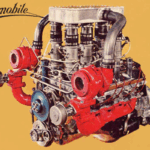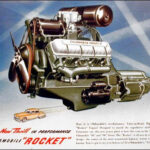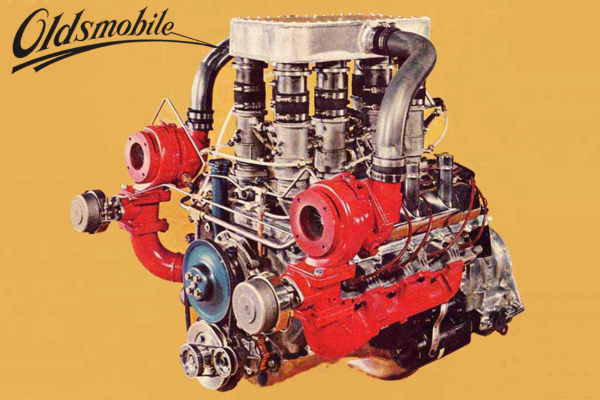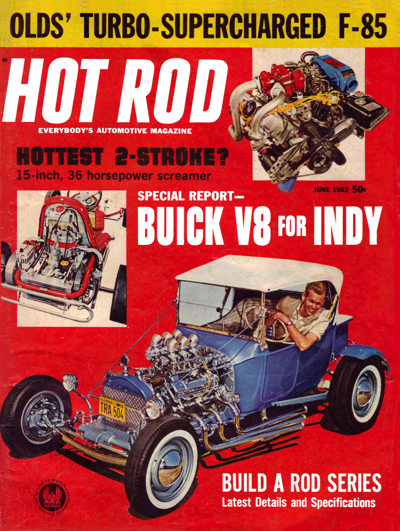By Craig Sparkes
It’s been many moons since my last blog. I’ve been busy with car projects and haven’t had time to collect my thoughts until now. In my last blog, I told of my latest car project a 1966 Ford Ranchero. I acquired the car without an engine and found a nice 1991 Mustang 5.0 engine for a fair price. Once the engine was home, cleaned, and on the engine stand, several big questions and decisions needed to be made. Here were the issues facing me — and anyone who is thinking of putting a late model 5.0 “roller” engine in an early Mustang, Ranchero, Falcon, etc need to consider. Here they are with my thoughts:
1. Should I keep the 5.0 an EFI engine or retrofit a carburetor setup?
2. Should I keep the serpentine drive set up and alternator or retrofit to the 1966 configuration?
I should point out that my Ranchero — although it had no engine — did come with complete wiring, bell housing, clutch linkage, and Toploader 4-speed transmission. Answer # 1 -Given this, I decided to retrofit the engine with a carburetor setup. This avoided the need to re-wire the car for the EFI controls. I horse traded the EFI setup for a 1984 Mustang aluminum 4bbl intake. Answer # 2 – Next I decided to retrofit the engine with a 1966 type alternator and drive belt set-up. Again, this avoided any rewiring issues.
Here are the step-by-step modifications required to complete the swap.
1. The early Ford cars have the front cross member in a different location than the later Mustangs. You need to replace the 5.0 oil pan and pickup tube with ones for your year of car. Most 1960’s Fords used the same parts. I got a new oil pan and pickup tube from Summit for $ 76. More horse trading — I sold the 5.0 pan and pickup tube for $ 50. Along with the pan and pick-up tube, you will need to relocate the dipstick to the front timing cover and plug the hole in the side of the 5.0 block. I used a short piece of 3/8″ dowel rod. The hot oil will expand the wood and seal the hole tight.
2. You will need to have a front timing cover that has the boss accept a mechanical fuel pump. All standard small-block Ford covers from the late 60’s will work. They are around $50. Once you get the cover, you will need to drill out the boss (or in my case remove the plug from the boss) where the dipstick tube mounts. Dipstick and tube (again from Summit) were $ 15.
3. While the front cover was off, I decided to replace the timing chain and gears. I used a double roller set which meant that the oil slinger (that washer-like part that was in front of the old timing chain on the crank gear) is not to be used. It will hit the chain on a double roller set. No bad things will come from removing it.
4. Since I’m using a mechanical fuel pump, a cam eccentric is required. Use the later 70’s two-piece eccentric not the single part from the early 289.
After buttoning up the timing cover, the next BIG decision is facing you. In late 1969 or early 1970 Ford changed the location of the water pump intake (lower spout) from the passenger side to the driver’s side. This also meant they scribed the crank dampener timing marks to be seen from the passenger side. Here are your choices. If you use a water pump that has the inlet on the passenger side (as was stock in my 1966) then the radiator bottom tank outlet is correct. However, you must then get a new pointer for the timing cover AND either re-scribe the crank dampener or use timing tape — this requires you to set the original pointer on TDC and then scribe the TDC mark where the new pointer lines up. Alternatively, you can use a 1970 – 1975 water pump. This pump has the inlet on the driver’s side. This keeps the original 5.0 pointer and timing marks intact but does require the radiator bottom tank to be modified. Thankfully, I had the radiator re-cored and the shop did the tank swap at a minimal cost.
Now that all was going smoothly, it came time to put on the accessories. All my Ranchero needed was an alternator so I purchased a set of standard alternator mounting brackets. Here I ran into my first “fabrication” problem. The 1970 water pump does not have a mounting boss for the lower adjusting arm on the stock alternator configuration. Second, the crank dampener on the 5.0 engine is tapped for 4 pulley bolts and not the three pulley bolts for a stock 1966 crank pulley. Fortunately, March makes and beautiful aluminum “V” belt pulley for just this application. Using their 1611 pulley and a .325″ spacer (also from March) solved the bottom pulley issue. After a lot of measuring, I determined that if I mounted the adjustment arm on the lower top mount bracket bolt — this is important — behind the bracket to act as a spacer, then the belt was in line on all three pulleys — water pump, alternator, and crank. The arm now came in behind the alternator adjustment bolt hole as opposed to the stock position in front of the hole. This did require a bid of bending of the adjustment arm and grinding a notch to clear the bottom of the alternator. But the net result was a factory stock-looking installation.
So the engine was now “buttoned up with the front accessories functioning. The next blog will cover the back of the motor — flywheel, clutch, etc.
Stay tuned











